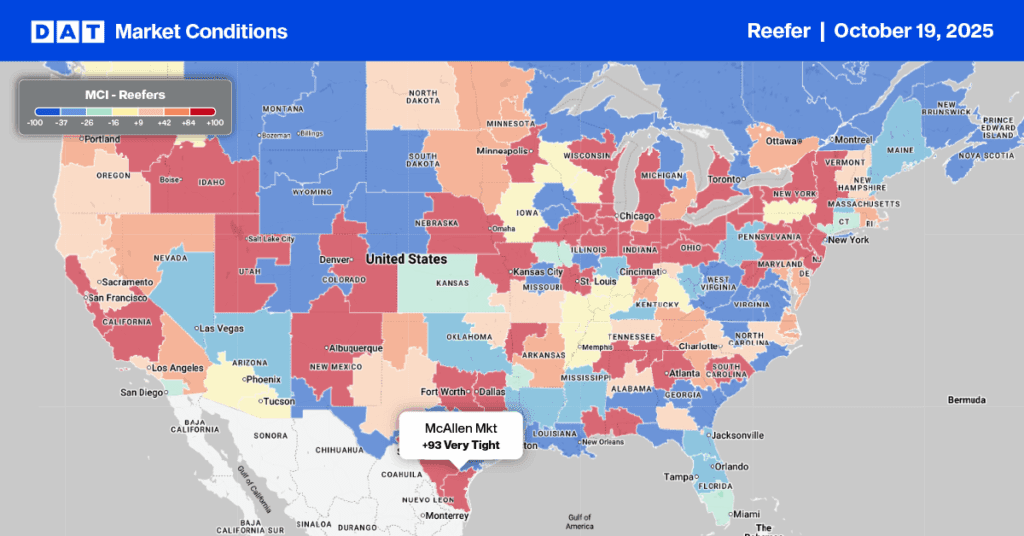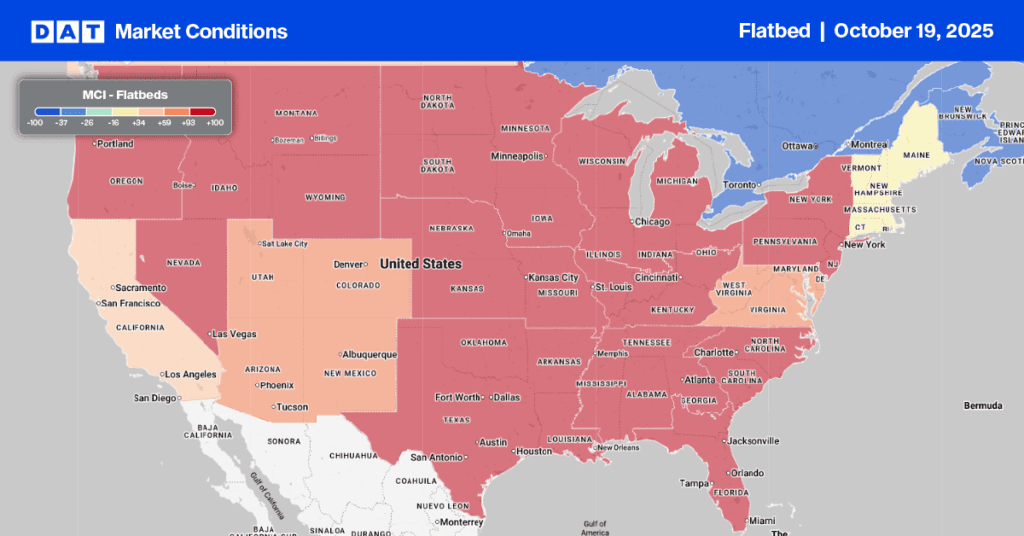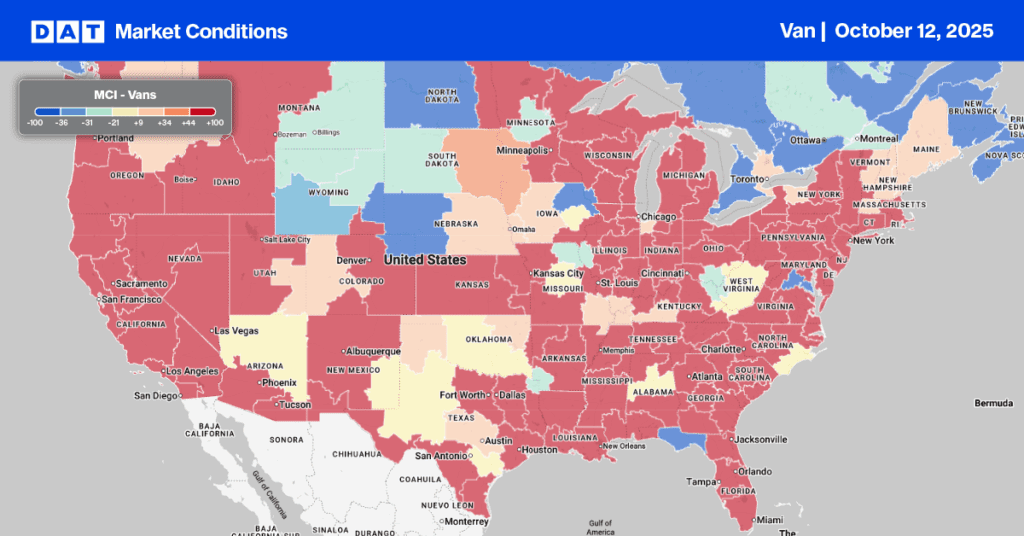On a recent DAT Freight & Analytics show, Lee Klaskow, Senior Analyst – Transportation and Logistics at Bloomberg Intelligence, discussed the future of the trucking industry. Here’s part of the interview with Ken Adamo, Chief of Analytics, and Dean Croke, Principal Market Analyst.
DATs Question of The Week: How do you see 2023 shaping up for transportation?
Lee Klaskow: Twenty-twenty-three will be another very interesting year, as all years tend to be. As we head into it, it’s becoming even more interesting, given what’s going on in the rail industry strike. You know that a potential strike could force the rail industry to close down a lot of their network before a strike on December night to make sure that their employees get home safely in case of the strike and also to avoid shippers having their freight lost in the rail systems. So many shippers are looking for alternatives to move those shipments, which could provide a slight near-term boost to at least the trucking spot rate market as we see it.
That, coupled with low levels of the Mississippi River, is incrementally positive for the spot market, which has been beaten up over the last six to eight months. Obviously, only some movements on a barge can be easily transferred onto a truck, but that could be a tailwind going into 2023. Despite these potentially positive factors for trucking, there are many headwinds down the road.
Next year, some of that has to do with the contractual rate side; you know, we see rates going down by low to mid-single digits. Much of that is due to a difficult comparison over the last two years due to a lot of contractual business that was transactional and short-term in nature due to tight capacity. The resulting high rates observed in 2021 were probably not sustainable. Those rates will likely come back to lower levels, dragging the overall contractual rates down. Some rates are down 15 or 20%, some lanes flat, and others down the net-net where we see a low to mid-single-digit rate decline.
Ken Adamo: At Bloomberg Intelligence, you cover many publicly traded trucking companies, so what do you see on the large fleet end of the market?
Lee Klaskow: We expect earnings for those companies to be down around 14% next year, and that’s off of two crazy growth years. It’s still going to be an excellent year from a historical standpoint, but some of that has to do with the rate declines we discussed. Some of that is going after demand. If you look at GDP as customer demand decreases, the recession risk increases daily. In contrast, the trucking industry had a huge win over the last couple of years with the sale of used equipment.
Also, with the OEMs returning to more normalized supply chain patterns, they are not quite where they need to be, but they are getting normal. So, we think trucking will be another challenging year in 2023. But we don’t believe the sky is falling, and it’s all doom and gloom. The spot market may begin to turn in the second quarter and third quarter of next year as the market rebalances from what reality was, which was too much capacity in the market over the last eight months.
Ken Adamo: It will be interesting to see where things top out, followed by a trough to mark the beginning and end of freight market cycles. Compared to the last two freight cycles, I’m curious whether you think the same will happen this time.
Lee Klaskow: Trucking companies and individual operators are facing higher costs than they’ve ever faced before. Insurance costs have skyrocketed. We’re operating in a relatively high-fuel environment. Equipment costs are incredibly high, and because fuel costs are so high, the cost to operate a truck is now at a higher base rate than it did a year ago, two years ago, or even three years ago. And shippers need to know that if fleets are not making profits and reinvesting in their equipment, then you’re not going to have a high-quality trucking service.
Dean Croke: One of the things we’ve been watching is the new truck and trailer orders that ACT Research has been reporting. We had some record numbers come through now audiobooks are open based on a lot of large truckload carriers having a bullish outlook for next year. Do you know what the large carriers might do next year as all of these new trucks and trailers start to come out of the factories in the second and third quarters?
Lee Klaskow: I spoke to many trucking executives at the ATA trucking conference last month. What I found most interesting when they were talking about their fleet composition, they typically might have operated with one or two trucking OEMs (Original Equipment Manufacturers). Last year, they talked to multiple OEMs to get better equipment allocations. So if they typically used Navistar and Freightliner, they’re also talking to Peterbilt and Mack Trucks as well to try to get more trucks.
The full interview can be found here.


